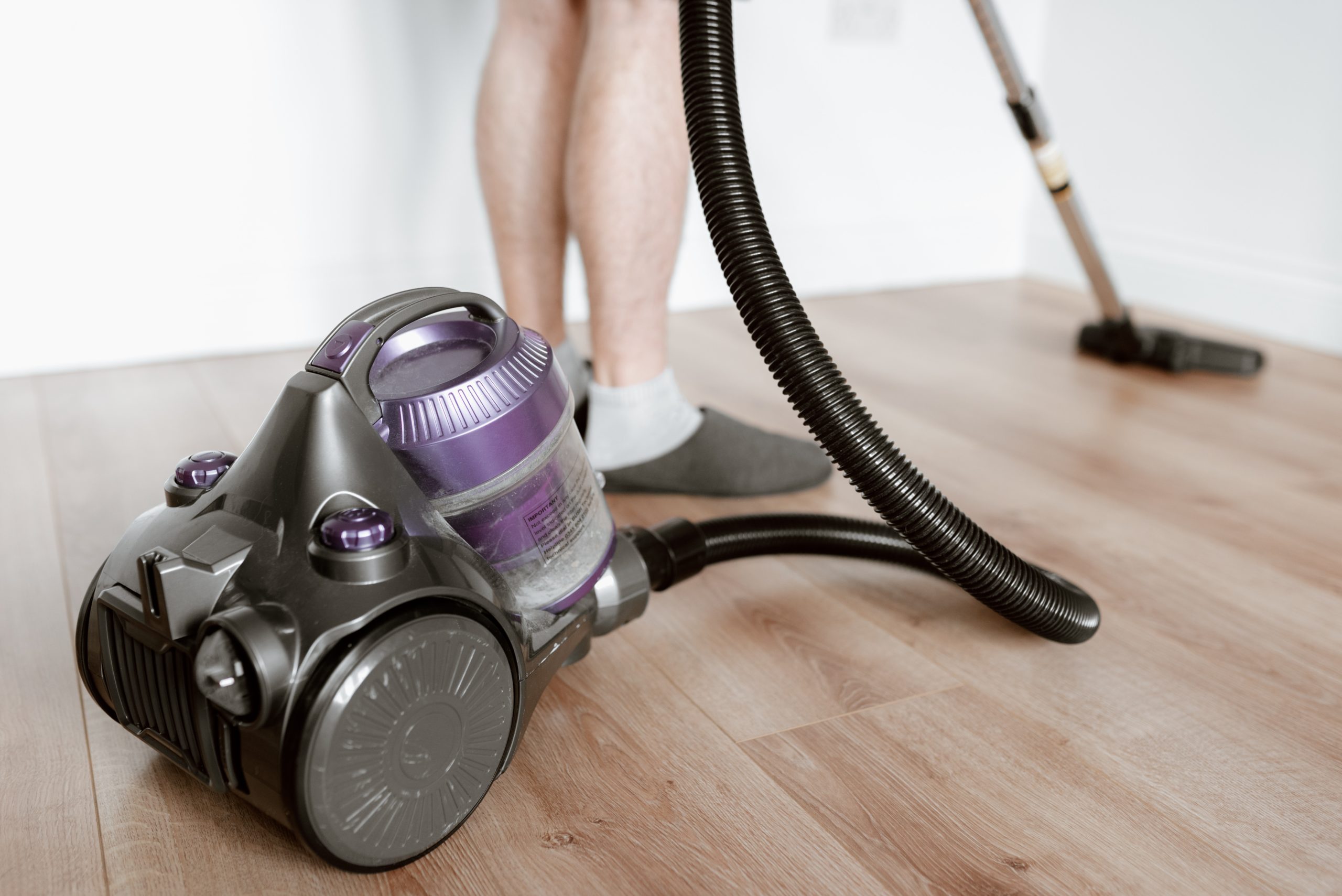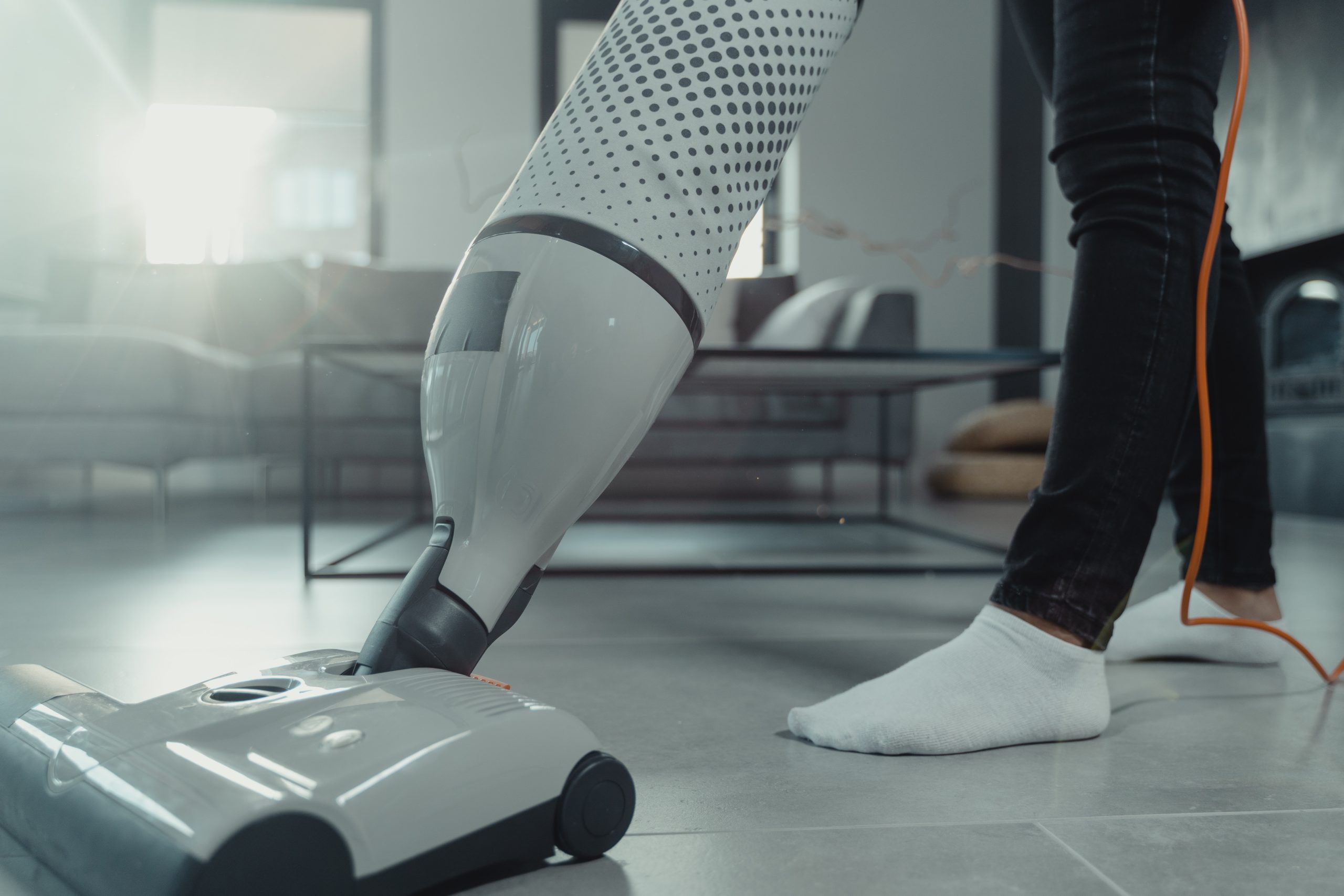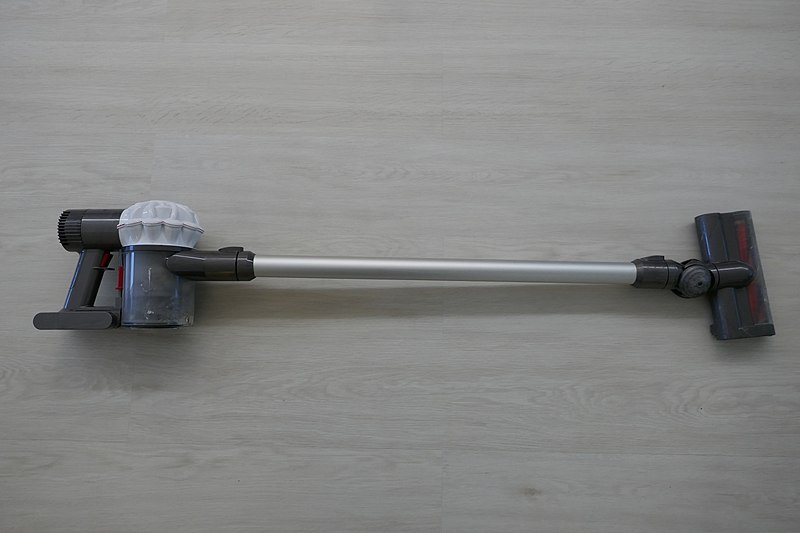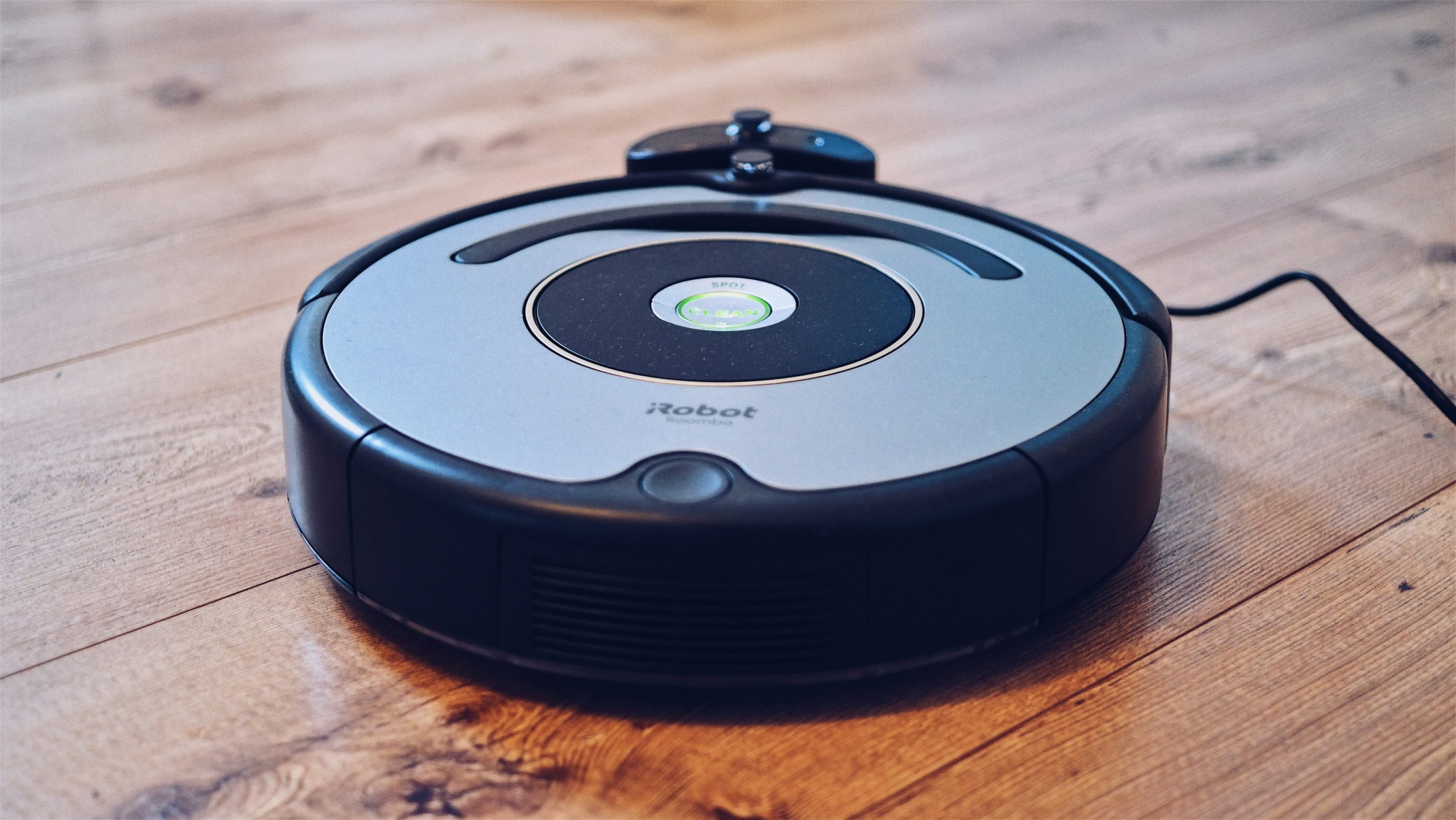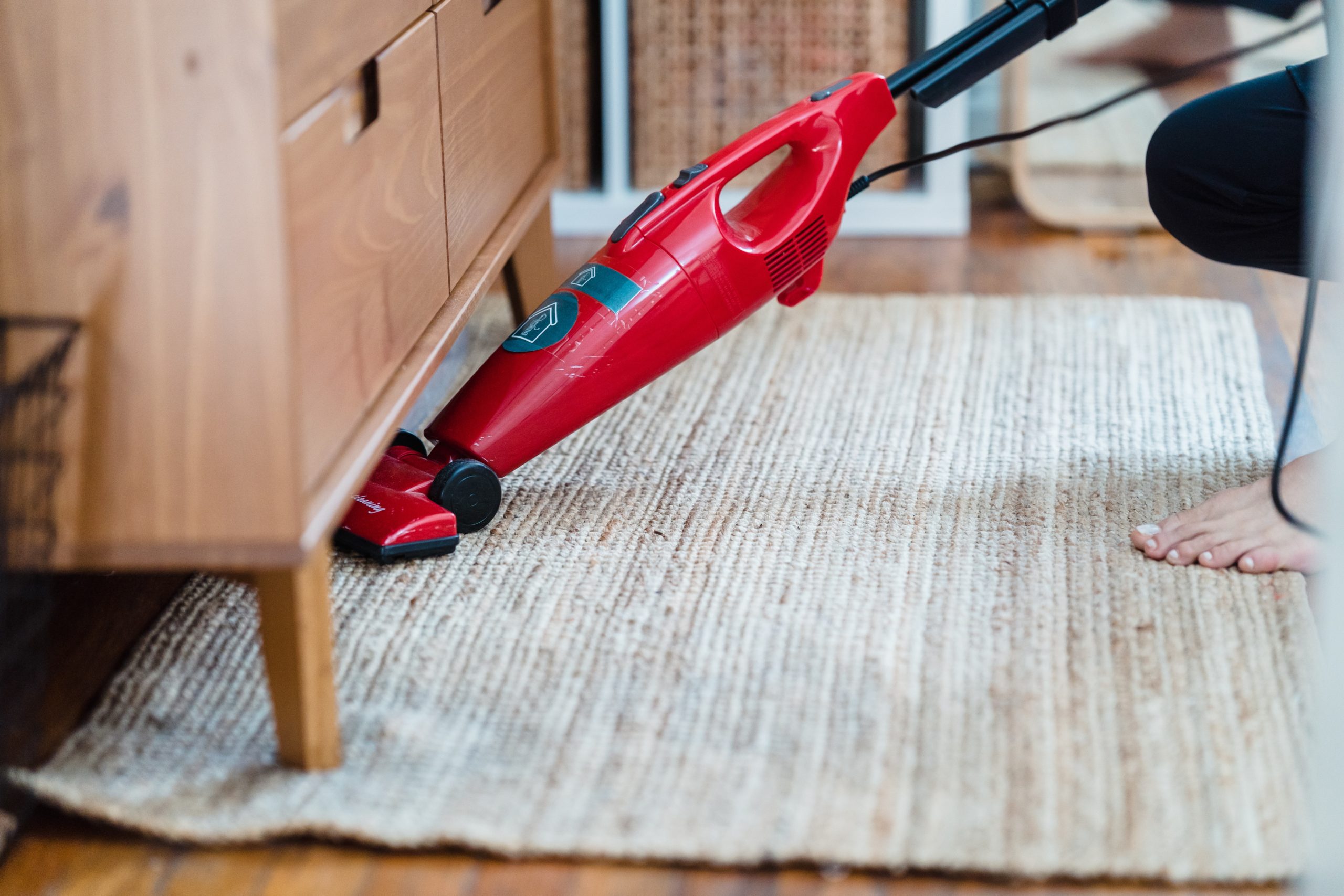Though sweeping and mopping can help make your house clean, having a good vacuum cleaner can make the chore quicker and easier and render your home even cleaner. Dust mites, pollens, dirt, and other allergens may stay after using the traditional methods, which is why adding a vacuum is your best bet to suck up all these particulates. Yet, remember that you need to find a vacuum that perfectly suits the job to make all the work effective and efficient.
These days you can find many types of vacuums in the market, which can be confusing if you’re unaware of their difference. They come in different forms, sizes, and features, that can greatly help, depending on your needs and lifestyle. Don’t worry, though! Here’s our ultimate guide to the type of vacuums. Read on below to make your quest easier and end up finding the right vacuum type for your beloved home.
Types of Vacuums
1. Canister Vacuums
Canister vacuums are portable and easy-to-use models that come with a motor and collection tank, equipped with a long, retractable suction hose where attachments are affixed to. As the motor and receptacle are separated, it provides better maneuverability, versatility, and flexibility.
Among the most widely used, these vacuums are perfect if you need to vacuum hard surfaces, furniture, and even on smaller, carpeted areas. They come in an array of accessories that make them multi-purpose cleaners.
You can use the long, flexible vacuum to reach tight spaces, the revolving brush to dislodge dirt and pet hair, or the straight suction for cleaning your car. Meanwhile, other attachments are intended for cleaning your drapes and upholstery.
Canister vacuums tend to be bulky due to the canister itself. Luckily, they come with wheels so you can simply drag them wherever you go. If you don’t have any physical limitations and are looking for a reliable, versatile vacuum, a canister will do wonders for you.
PROS
✓ Great maneuverability and flexibility due to the separate canister and long powerhead
✓ Highly versatile, thanks to its bunch of attachments
✓ Perfect for most surfaces and household vacuuming tasks
✓ Quieter than upright models
CONS
✗ Bulky, which means they take a lot of space and can be harder to store
✗ Plenty of attachments requires extra time for changing, depending on the application
✗ Attachments need additional storage
✗ Can be quite heavy to drag or move for smaller people and the elderly
2. Upright Vacuums
For most people, upright vacuums are the model that comes to mind when thinking about vacuums. They became widely popular starting from the 1950s, initially intended to help housewives clean their carpets pretty much faster and easier. Nowadays, upright vacuums tend to be the most common and the standard for these machines.
Upright vacuums are an innovation of the canister vacuum. Rather than having a separate unit, it incorporates the motor and the collection tank into the upright cleaning module. A motor-driven brush is located at the bottom end, which agitates, and removes the dirt and dust through suction. The container, either bagged or bagless, is located on the top end. Features include attachments and easy transitions for cleaning hardwood surfaces or carpeted floors.
A drawback is that upright vacuums aren’t portable. They aren’t great if you’re looking to clean sofas, furniture, and especially tight spaces. Their magic works on larger floors and carpets, as they can clean them thoroughly with little effort and time.
PROS
✓ Best for cleaning all types of flooring
✓ Easy to maneuver around your home
✓ Easy to use
✓ Most come with a good-sized container
✓ Affordable, perfect for those looking for nothing fancy but dependable vacuum cleaner
CONS
✗ Not portable compared to other vacuums types
✗ Don’t come with attachments, which limits usage
✗ Pretty heavy, usually between 13 to 18 pounds, requires strong arms to use around
✗ Noisier than canister vacuums
✗ Bulky, which means can be a problem in storage
3. Handheld Vacuums
As their name suggests, these models are handheld and are the smallest vacuum type available in the market. They are portable, lightweight, and compact, suitable to be held, and used by only one hand. They first came in the 1980s and gained massive acceptance, since then technology did its work and handheld vacuums have evolved to be a handy device.
From the earlier models that come with cords, today, newer ones have built-in rechargeable batteries for even better portability. They are perfect for cleaning awkward, hard-to-reach spaces or even your car interiors. While they may lack the battery life and the capacity of other vacuum types, they’re perfect for smaller homes and apartments with limited storage, and where troublesome crannies and nooks abound.
PROS
✓ Lightweight, weighing usually only less than 4 pounds
✓ Cordless and rechargeable
✓ Compact and easy to store
✓ Easy to use, most function by pressing a single button
✓ Ideal for cleaning small spaces and messes
CONS
✗ Minimal suction power and capacity
✗ Tiny, which means less coverage
✗ Limited battery life, more charging time than its actual operation
4. Stick Vacuums
Stick vacuums get the best out of the handheld vacuums and upright vacuums. Pretty lightweight and battery-powered, it boasts the convenience of the former, but given its upright form, it provides the efficiency of the latter in cleaning all floors.
The catch is that stick vacuums don’t usually come with attachments. Instead, they serve as a great replacement for the broom and dustpan. You can use it for quick cleaning needs on the kitchen, bathroom, and hardwood floors.
As they are lighter, it’s also easier to use them on stairs and multi-level homes. You’ll have no issues carrying them up and down, unlike the bulkier upright vacuums. Lastly, they’re easy to use and easy to store, allowing them to work best in smaller homes.
PROS
✓ Lightweight, easier to haul around than upright vacuums
✓ Mostly are cordless, which allows more movement
✓ Compact and easy to store
✓ Easy to use, no attachments, and operates just by turning on the power button
✓ Perfect for quick clean-ups
CONS
✗ Smaller capacity requires emptying the canister more often
✗ Not powerful and will not cover big messes
✗ Cordless types have a short battery life
✗ Can be pricey
✗ Fairly noisy
5. Robotic Vacuums
Robotics vacuums represent the advancement of technology. Also known as autonomous vacuums, these battery-operated robot cleaners work hands-free. All you need is to set the sensor boundaries and adjust other settings and they’ll do the work for you. They are smart enough to avoid obstacles while seeking out and clearing dust, dirt, and debris from hard surface floors and underneath furniture.
If you’re pretty busy, suffer allergies, own pets, or simply want to keep your floors constantly clean without having to vacuum regularly, getting a robot vacuum is a great choice for you. While not powerful as traditional vacuums, the regular light cleanings it offers will provide much ease and convenience.
What’s even remarkable is that you can program these nifty gadgets using an app on your smartphone and use Wi-Fi and GPS for communication. In case you’re not home, you can program it on the app to run. Don’t worry, as newer models even have the capability to go back to their stations and empty their collection tanks on their own when full.
PROS
✓ Autonomous, no effort required
✓ Compact, can fit and clean under furniture like sofas, chairs, and beds
✓ Quiet
✓ Allows remote access through your smartphone
✓ Perfect for light cleaning tasks between regular vacuuming sessions
CONS
✗ Not a stand-alone vacuum, which means you need other regular, deep-cleaning vacuums
✗ May not work efficiently for rooms with too much clutter
✗ Limited suction power, cannot match upright and canisters
✗ Limited capacity
✗ Cannot be used on carpets and area rugs
✗ Expensive
6. Central Vacuums
Central vacuums are the easiest type of vacuums to use, yet are also the most expensive as it needs professional installation. They are incorporated as a part of your house, seemingly like a central AC system. These large-scale vacuums have tubes running behind your walls, connected to large-capacity bins.
All you need to do is connect the hoses and attachments. There’s no more need to carry, pull or push a heavy cleaning module with motors and a collecting tank around. The hoses are incredibly long, with some measuring up to 30 feet. Just be sure to have lots of storage space as they can be bulky.
All in all, central vacuums are relatively-quiet and are perfect if you want to break free from the restrictions of upright vacuums, without having to hoist a canister.
PROS
✓ Very convenient, simply plug in the hose anywhere around your home to start using
✓ Large capacity, allow multiple vacuuming sessions before needing to empty
✓ Versatile, thanks to the wide arrays of attachments available
✓ Powerful suction enables you to such lots of dirt, debris, pet hair, and other particles
✓ Best for large homes
CONS
✗ Requires professional installation
✗ Can be challenging to install not built to have central vacuums
✗ Pricey
✗ Cumbersome hoses need large storage space
7. Carpet Cleaners
Carpet cleaners, also called deep cleaners, carpet shampooers, or carpet extractors, are a special type of vacuum that utilizes moisture and heat to loosen all the dirt, dust, bacteria, dust mites, and pet dander that may still be trapped even after doing regular vacuuming sessions. It works by spraying hot water with a soapy cleaning solution, brushing the carpet fibers, and sucking up all the dirt, stains, and water from your carpeting.
Be mindful that carpet cleaners aren’t meant for daily use and are not suitable for hardwood floors. With the different forms and styles available today, from portable, uprights, and handhelds, they are better designed for cleaning rugs, drapes, upholstery aside from your carpeted floor.
Carpets cleaners have a deep cleaning technology, which means it disinfects as it clean. It’s perfect if you have any loved ones who suffer from allergies or asthma, as they can get rid of more allergens and germs. Thus, improving the overall air quality in your home.
PROS
✓ Efficient and keeps carpet looking new
✓ Relatively safe to us
✓ Best for cleaning deep-seated dirt in your carpet
CONS
✗ Not meant for hardwood surfaces
✗ Best done by professionals
8. Shop Vacuums
Shop vacuums are typically upgraded, heavy-duty counterparts of canister vacuums. They are more powerful, having the ability to suck up heavier objects like small rocks that you practically won’t like to be picked up by your regular vacuums. Moreover, they have a larger capacity, which means they can cover for bigger and professional-sized clean-up projects.
As they are meant for the big tasks, expect that this vacuum type is very bulky and harder to store if you don’t have extra space. While you can get smaller shop vacuums, it entails sacrificing some suction power. They are perfect for cleaning basements, garages, and hob sites as they can handle all the debris present in these locations. Just make sure you won’t get them too full as they can get too heavy and be hard to move around.
PROS
✓ Super powerful, can suck up relatively heavier debris
✓ Works excellent for larger areas
✓ Incredibly durable
CONS
✗ Very noise
✗ Bulky and hard to store
✗ Quite heavy
✗ Needs attachments and gears
9. Wet and Dry Vacuum Cleaners
Wet and Dry Vacuum cleaners are a special type of vacuum taking the form of a canister or shop vacuum. They are designed to clean both wet and dry messes without getting damaged. You can use them as a traditional vacuum cleaner, but the added perk is that you can use them to clean wet spills and leaks. They are suitable for cleaning indoors or outdoors, inside your home, your garage, or your basement.
As a specialty vacuum, not every homeowner gets a wet and dry vacuum, though some prefer to have them for emergencies. This vacuum type can be big and bulky. If you decide to get one, ensure that you have ample space for its storage. As it can suck up spills, be water that it can get pretty heavy, so assess first if you can move them and empty them without much struggle.
PROS
✓ Versatile, can tackle both wet and dry messes
✓ Dual purpose, airflow can be inverted and act as a blower to dry things off
✓ Powerful suction
✓ Easy to drain
CONS
✗ Bulky and heavy
✗ May develop a smell, especially if used to clean pet urine and other foul wet spills
10. Car Vacuums
Car vacuums, as their names suggest, are made for cleaning cars and vans. They can be either built into your vehicle, come with a canister, or can be a stand-alone handheld unit. If you’re needing to clean on the go, embark on a road trip, or travel with kids and pets, they are the perfect vacuum for you.
You can use them to clean crumbs, cereal, pet hair, and other dirt from your car and its upholstery, keeping them in pristine condition. As they are smaller, portable, and easy to store in your trunk, it eliminates the need to haul full-sized and heavier vacuums outside your house just to clean your car’s interior.
Just note that they have less suction power, but the array of attachments and accessories they come in will help you clean all the cracks and crevices in a breeze. By doing so, you also ensure that no insects and rodents are attracted by leftover tiny food, plus you preserve carpet and upholstery stains, helping keep your car’s value.
PROS
✓ Small, lightweight, and portable
✓ Easy to store in the car’s trunk
✓ Designed to reach smaller and tighter spaces
CONS
✗ Less powerful motor
✗ Cordless options need to be recharged often
✗ Corded models can get quite hot if using the cigarette lighter adapter connection
11. UV Light Sanitizing Vacuums
UV light sanitizing vacuums is another new technology in the vacuum industry. It incorporates UV germicidal lamps into ordinary vacuum cleaners, giving them additional sterilization and disinfection properties. As you vacuum, a beater bar agitates the area, while the light simultaneously shines over and sanitizes the targeted surface.
With the introduction of the UV germicidal lamp, not only can you suck up dirt, dust, debris, pollen, pet hair, and dander, but you also eliminate germs, bacteria, and other microorganisms. If you have problems with dust mites, UV light sanitizing vacuums are also effective in killing them and their eggs, preventing their further spread and growth.
Don’t fret, as UV technology has been around for decades. You can safely use it with kids and pets around. As they normally come with HEPA filters, you even make your home safer by removing up to 99% of 0.125 micron-sized particles and allergens. If you want to elevate your home’s cleanliness, UV light sanitizing vacuums can be a great solution.
PROS
✓ UV germicidal lamp provides sterilization and disinfection capabilities
✓ Can tackle dust mites
✓ Kills infectious microorganisms
✓ Comes with powerful HEPA filters
✓ Easy to use, operates as a normal vacuum would
CONS
✗ Requires multiple cycles to ensure that all areas are hit
✗ Will not replace floor vacuums
12. Convertible Vacuums
Convertible vacuums are becoming popular nowadays, as it rolls the features and functionality of two or more vacuums into one. Common models include upright vacuums with a separate removable canister. With that, you get the versatility of a canister, but also reap all the powerful cleaning capabilities of an upright vacuum. Most stick vacuums are also convertible to handheld and vice-versa with a few simple steps, enabling you to take the benefits of both vacuum types in one cleaning module.
PROS
✓ incorporates two or more vacuums types into one
✓ Easy to transform from one type to another
CONS
✗ Takes the disadvantage of the integrated vacuum types
Factors for Choosing the Best Vacuum Type
Now that you’re aware of the different types of vacuum, don’t head to the appliance store or shop online straight away as you also need to know some considerations before purchasing a vacuum cleaner. By learning all these requirements, you ensure that you make a smart purchase and get one that’s perfect for your needs, lifestyle, and home. Here are the factors that you should consider:
1. Flooring
One of the most critical factors in determining the kind of flooring in your house. If you’re using hardwood surfaces, upright vacuums, canister vacuums, and robotic vacuums are your best options. If you have lots of carpets, rugs, and draperies, make sure to avoid the latter and instead, consider getting a carpet cleaner. If you’re dealing with larger floor surfaces or a larger or multilevel home, might as well check the possibility of installing a central vacuum.
2. Space
Does your home have lots of clutter like furniture, cabinets, and chairs, leaving hard-to-reach spaces? Stick vacuums and handheld vacuums are the ideal solutions for reaching those tight areas and crevices. If you want to clean under furniture, adding a robotic vacuum will make the work easier. If you have a minimalist home instead, sans many obstacles, a canister or upright vacuum will often suffice for your cleaning needs.
3. Suction Power
If you’re living with active kids who can bring more dirt and soil from the outside or own pets that shed hair and dander, you’d be better off purchasing vacuum types with higher suction power. Larger homes, garages, and outdoor areas also need stronger suction power, something you’d get from a shop or wet and dry vacuum cleaner.
4. Dirt Bin Capacity
Either a bagless or bagged model, a vacuum cleaner’s dirt bin will eventually get full. Most full-sized vacuums have a one-liter capacity, which makes them suitable for cleaning larger areas without interruptions. Handheld and stick vacuums have smaller dirt cups, usually only at 0.3 to 0.7-liter range, which means they may need more frequent emptying. That’s why they are more suitable for quicker cleaner ups, rather than functioning as the main vacuum cleaner. Determine which type has the suitable dirt bin capacity depending on your cleaning needs.
5. Corded or Cordless
Vacuum cleaners are available in corded and cordless options. Corded options are plugged directly into your home’s power source, which means you can clean constantly as there is a steady flow of energy. Cordless models rely on the onboard battery, which will drain and deplete, requiring a recharge. Yet, the main advantage of cordless vacuum types is that they do not limit movement and are more portable, unlike corded ones where lengthy wires can be quite restricting and a hassle.
6. Ease of Use
Remember that a vacuum cleaner will ensure your home’s cleanliness. With that, it’s vital that you choose the vacuum type you’re most comfortable using. To assess that, you can go to the nearest appliance center and try the unit on your own. Push, pull, lift, and turn the vacuum cleaners you’re checking. See the control and if they’re smooth to use. Check if the dirt bins are easy to empty. By doing these, you can find one that’s a perfect match for you.
7. Noise Levels
Some vacuum cleaners can be uncomfortably loud, which is bad if you have kids or pets in your home. Not to mention that you may disturb your neighbors nearby. So, watch out for the noise levels during the demo. That way, everyone won’t be startled when you first use the vacuum at home.
Final Words
We hope this guide helps you learn more about the different vacuum types and make an informed choice. A vacuum cleaner can greatly help meet your cleaning needs quicker and easier, so never hesitate to get one for a cleaner, lovelier, and safer home. Happy cleaning!


